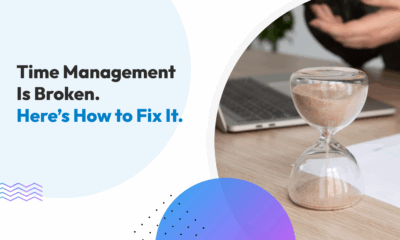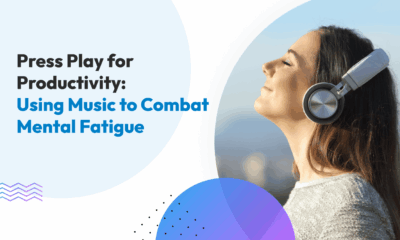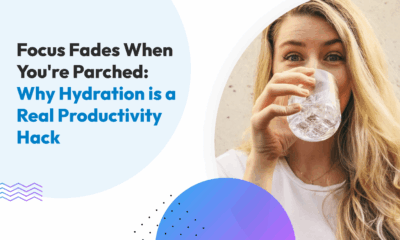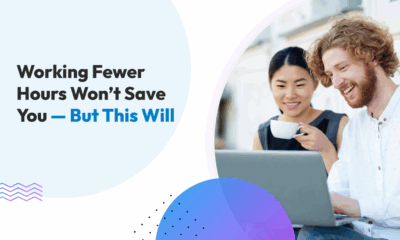Science Says
How To Make Decisions That Work for Everyone: Insights from Neuroscience
Conflicting demands from clients, colleagues, vendors, and other stakeholders – they require a careful balancing act to keep everyone (including ourselves!) happy. Maybe some of your coaching group wants weekly check-ins, while others insist bi-weekly works better. Or you are organizing a team-building event, and the group suggested three very different themes.
How exactly do we manage the mental calculations of what to give one party while making sure others’ interests are also catered to? This study combined neuroscience and economics to find out where in the brain all this happens, and how we resolve these kinds of dilemmas.
Read on for actionable insights that can help us make fair decisions that provide maximum benefit to all involved, even when their preferences are not all aligned.
We can learn what others like with surprising accuracy
Researchers created a three-step experiment to understand brain mechanisms for encoding, comparing, and implementing our understanding of others’ preferences in a resource allocation exercise.
In the first stage, participants were made to choose varying quantity combinations of two snack foods they liked (5 raisins and 1 peanut, or 3 raisins and 3 peanuts etc). In the next stage, they observed two other participants (called ‘agents’) going through the same exercise, and simultaneously tried to predict what food quantity combination the agent would pick.
Researchers found that a specific region of the brain called the ventromedial prefrontal cortex (VMPFC) processes both our personal preferences and others’ preferences, but in different ways. It uses distinct neural codes for personal versus others’ preferences. This suggests our brains have specialized ways of understanding what we like versus what others like.
More importantly, they observed that participants correctly predicted 91% of agents’ preferences. Researchers designed the second stage such that one agent had the opposite preferences as the participant, while the other agent had very similar preferences. Yet they successfully learned and predicted both the agent’s choices, even the one who had different tastes from themselves.
Action Item: This finding highlights the importance of actively observing others’ behavior, be they customers, colleagues, or other stakeholders, to understand their preferences.
Try to systematically collect and analyze customer feedback and behavior patterns across multiple channels, such as surveys and interviews. Instead of projecting your own preferences onto your market, invest time observing how customers interact with your products/services, what features generate the most engagement, and where they find the most value. This data-driven approach to understanding stakeholder needs leads to better business decisions and resource allocation, and is key to developing long-term, loyal relationships.
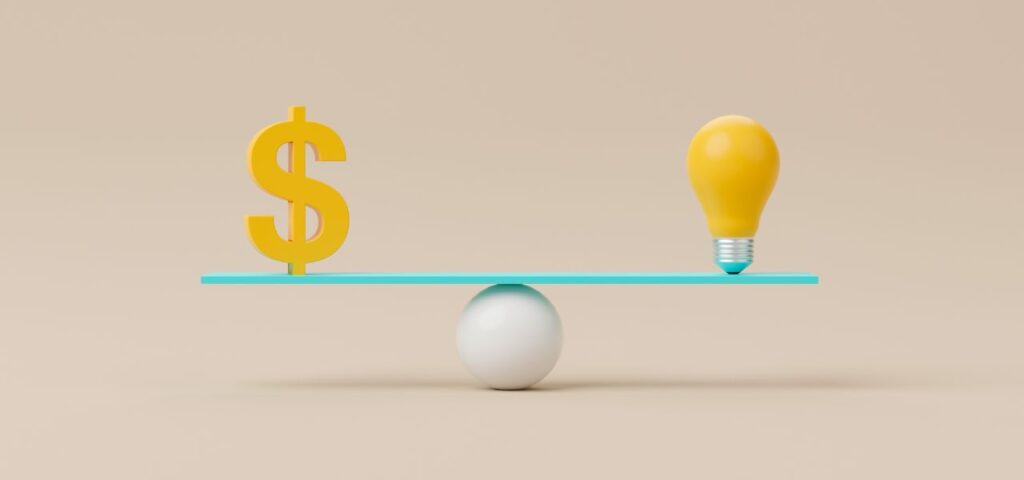
Can we quantify and compare how much others benefit from our choices?
The participants in this study went through 312 trials to learn the preferences of the agents they observed. And it wasn’t simply that Agent 1 liked peanuts more than raisins. Participants actually figured out how many raisins would be equivalent to one peanut (ie, the ‘exchange rate’) between two preferred goods.
So, if Agent 1 thinks 1 peanut is equivalent to 2.5 raisins, you would know he would be happiest with 5 peanuts versus 1 raisin, but happier with 3 raisins versus 1 peanut. And if Agent 2 thinks 1 raisin is as good as 2.5 peanuts, then you also know the opposite combinations would make him happier.
This is an important element of understanding others’ preferences that takes into account the intensity of preferences rather than just simple ranking. With this, we can put other people’s inclinations and tastes on a common scale. This makes it possible to quantitatively make choices that maximize the happiness of the group, as you have a common basis to compare the ‘happiness’ each option produces for different parties involved.
Action Item: As a business owner or freelancer, understanding the relative strength of stakeholder preferences is crucial for making better decisions. Just as study participants learned exact “exchange rates” between food preferences (like 2.5 raisins = 1 peanut), you can develop similar frameworks for your business choices.
For instance, some clients might strongly prefer faster delivery even at a 30% premium, while others slightly prefer lower prices even if it means waiting longer. Or some team members might value flexible hours twice as much as a higher hourly rate.
Create your own “exchange rate” system by actively tracking and comparing what different stakeholders value most. This could mean noting how many clients choose rush fees over standard delivery, how many team members prefer remote work options over higher pay, or how many customers choose premium features versus basic services. These patterns help you understand not just what people prefer, but how strongly they prefer it, leading to better-informed business decisions that maximize satisfaction across your stakeholder groups.
We tend to choose the greatest good for the greatest number
The last stage of this study involved having participants allocate snacks to the two agents. They were only presented with allocations which created conflicts between the two agents’ preferences. Following the previous example, one allocation option could be (A) 5 peanuts for Agent 1 and 1 raisin for Agent 2, versus (B) 1 raisin for Agent 1 and 5 peanuts for Agent 2.
Interestingly, participants chose options that created the greatest total satisfaction for both agents (71% of the time) without being instructed to do so. Knowing Agent 1 and 2’s relative preferences, the participant would choose option A since that gives maximum happiness to agent 1 and agent 2 is still relatively satisfied (versus option B where neither gets the maximum quantity of what they like the most, and only meager amount equivalent in terms of their second preference).
This tendency to select options that produced the greatest good for the pair of agents, or what is commonly known as utilitarian welfare maximization, explained more of the participant allocation selections than any other utility maximizing principle. For example, the Rawlsian Theory, which seeks to maximize the welfare of the worst-off agent, only explained 49% of participants’ choices.
Action Item: The study reveals that people naturally tend to make decisions that maximize total group welfare, even without being explicitly told to do so. It also suggests that people in general might expect your decision-making to be based on this principle and this might be the common understanding of fairness. Remember to clearly communicate your decision-making process, helping stakeholders understand how the chosen option benefits the group as a whole, even if it means some individuals only get their second-best preference.

Decision-making and conflict resolution happen in steps and may be imperfect
The brain doesn’t just integrate conflicting preferences instantly; it learns, encodes, and iteratively refines decisions based on feedback. In the experiment, participants first underwent over 200 trials of an allocation exercise according to their personal preferences, and then over 300 trials learning the agents’ preferences. Yet, in the last stage (allocating goods to agents), only 71% of results conformed to welfare maximization principles, in spite of participants being able to predict 91% of preferences correctly.
Action Item: Learning through small adjustments is key to managing competing demands. Even then, the choices and outcomes may not be ideal for everyone involved. Especially in the real world, where choices may not be aligned with the preferences of either or all involved, welfare maximization would be more challenging.
Just as study participants needed hundreds of trials to learn and make optimal choices, implementing changes in your business requires an iterative, patient approach. Start with small-scale adjustments to test new policies or service offerings – whether it’s tweaking your pricing structure, adjusting delivery timelines, or introducing new service features. Give each change enough time to show results, collecting feedback and tracking key metrics like client satisfaction, team productivity, or revenue impact.
Expect some trial and error. The key is maintaining clear communication about your decision-making process and being willing to adjust based on results. This iterative approach helps minimize risks while finding solutions that maximize benefit for most stakeholders.
Limitations of the Study
While this study provides valuable insights into how our brains process and compare different people’s preferences, several limitations should be considered.
First, the experimental setup used simple choices between two food items, which is far simpler than real-world decisions involving multiple stakeholders with complex, often changing preferences. The study also focused on immediate choices without considering long-term consequences or the dynamic nature of preferences over time. Additionally, participants observed and made decisions about only two agents with clearly defined, opposing preferences – a scenario rarely found in business or social settings where multiple stakeholders often have partially overlapping or ambiguous preferences.
The controlled laboratory environment, while necessary for precise measurement, may not fully capture the emotional and social factors that influence real-world decision-making. Furthermore, the study’s participants were primarily young adults (average age 23.3 years), potentially limiting the generalizability of findings across different age groups or cultural contexts.
The welfare maximization task also lacked real consequences or incentives for participants, which might have influenced their decision-making patterns. In the real world, any decision we make on our business will have an impact on our welfare as well, and so we not only have to account for the preferences of our stakeholders but also include ourselves in the equation.
Wrap Up
This study suggests our brains have a significant capacity to understand, predict, and account for other people’s preferences in decision-making and resource allocation. The key takeaway for business owners is that while we have the neural machinery to make welfare-maximizing decisions, this ability works best when we:
- Systematically collect data about stakeholder preferences
- Create frameworks to compare different stakeholders’ needs
- Take an iterative approach to implementing changes
- Accept that not every decision will perfectly satisfy all parties involved
Remember that real business situations are more complex than the study’s controlled environment. However, understanding that our brains are naturally equipped to handle such complex preference comparisons can give us confidence in developing systematic approaches to stakeholder-focused decision-making.



